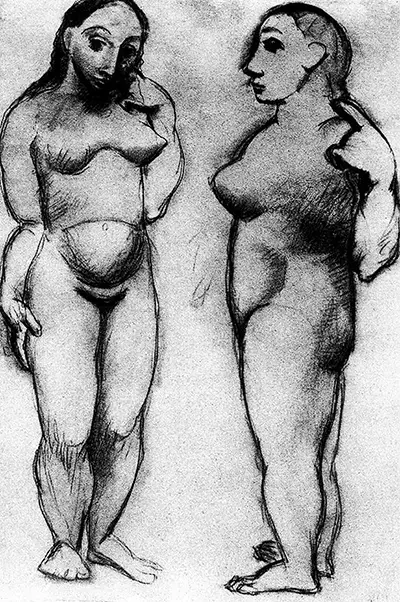It could be argued that the woman on the left is distinctly more feminine in her facial features, although the woman on the right is perceived from a different angle and appears to be mimicking her stance and gestures, which gives rise to debate that both women are in fact the same person. If that is the case, the absence of a mirror is an interesting omission and the kind of talking point that Picasso specialised in. The post-impressionism style that Picasso has employed in his approach to the sketch is harshly vivid, and he has ventured far from any suggestion that depictions of naked people should be in any way erotic.
Picasso's use of smudged charcoal to remove any hint of defined or toned body features in either woman is a further illustration of his desire for both subjects to appear far removed from how society dictates young women should look. Even by 1906 standards, which are nowhere near as unforgiving as the modern day, they would be considered large women. So often in his prolific, seventy-year career, Picasso painted or drew subjects that he somehow recognised beauty in but that society at large perhaps wouldn't have. Even now, more than four decades after his death, his works challenge us to search for hidden beauty in every single stroke of a brush or pencil.
Beauty is a subjective thing, and nowhere is this theory better illustrated than in 'Two Naked Women 1906'. Picasso was only approaching his mid-twenties when he sketched this fascinating piece. It is as much about the women (or woman) in the drawing as it is about Picasso himself – a wonderfully gifted, emerging artist making statements through his art. Exactly what kind of statement he was trying to make here is open to discussion.

